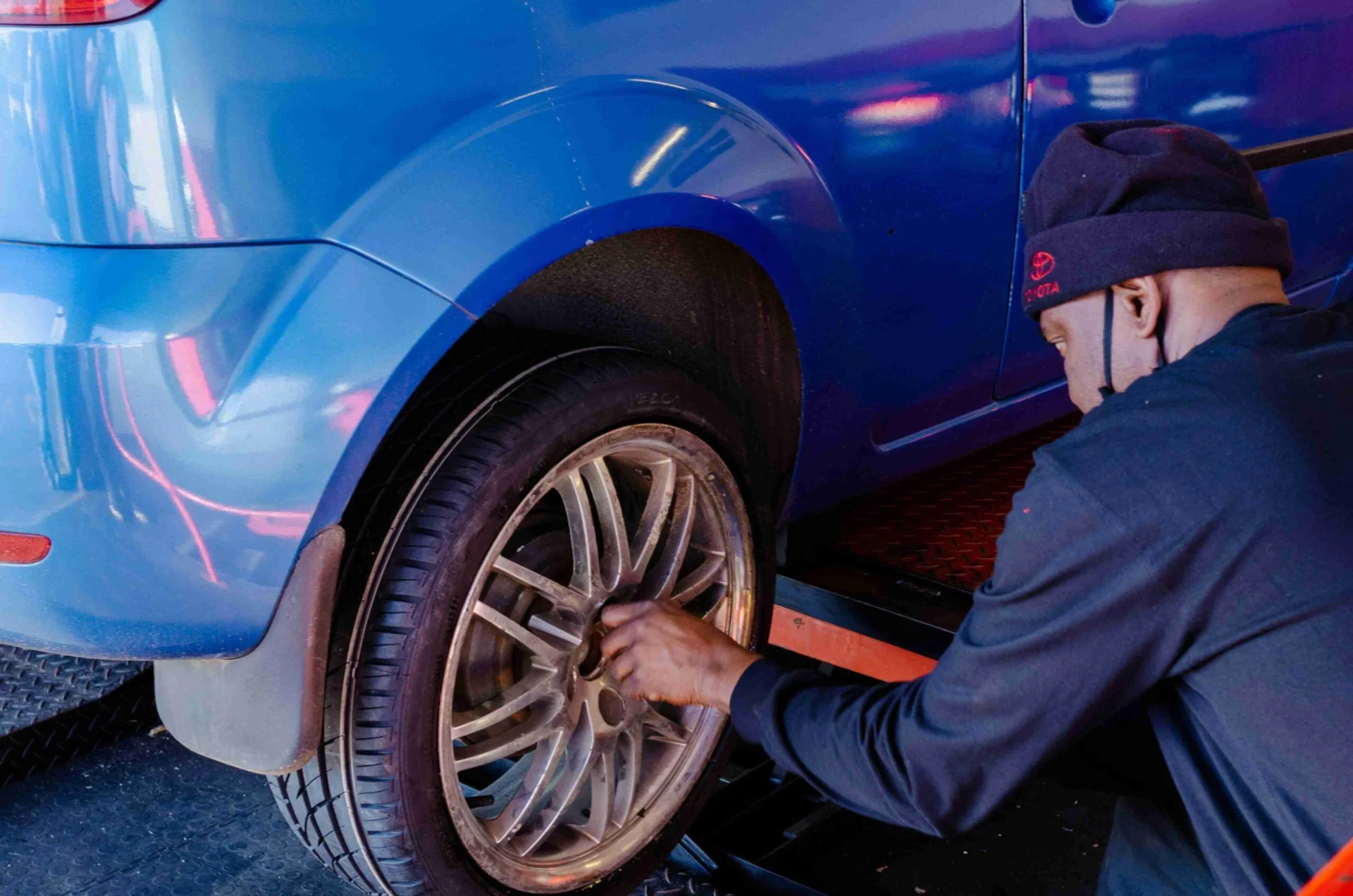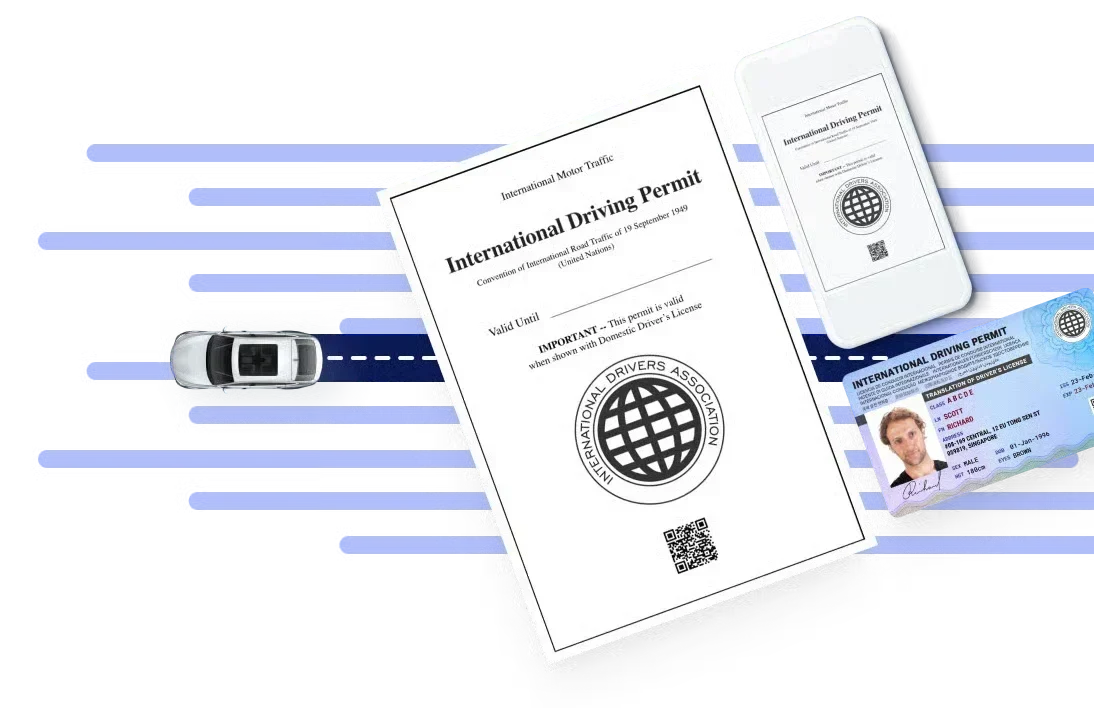Driving in a foreign country can be an exciting adventure, allowing you to explore at your own pace. That is why more people plan to take one as a perfect getaway. In fact, in the US alone, 75% of travelers planned for a road trip over the summer, according to a recent survey. And you might be one of them.
Check if you need an IDP NowWhere was your license issued?
Destination
However, while it provides much adrenaline, it also comes with unique challenges, especially when faced with unexpected vehicle issues. This is especially true if you are driving in an unfamiliar territory—let’s say, on a road trip abroad. If that’s the case, then you’ve come to the right place.
This article will guide you through the essential steps and tips for dealing with roadside emergencies while driving overseas, helping you stay prepared and confident during your international road trips.
Pre-Trip Preparation
Before embarking on your overseas driving adventure, thorough preparation is key to avoiding potential roadside issues. Here are some crucial steps to take:
Research local driving laws and regulations
Each country has its own set of traffic rules and regulations. Familiarize yourself with the basics, such as speed limits, right-of-way rules, and parking restrictions. This knowledge will help you avoid unnecessary trouble on the road.
Obtain an International Driving Permit (IDP)
Many countries require an IDP in addition to your regular driver’s license. Check the requirements for your destination and obtain an IDP if necessary. This document can be invaluable when communicating with local authorities or assistance providers. Fortunately, claiming one doesn’t have to be tedious because you can easily get your IDP online .
Learn basic car-related vocabulary
Knowing vital automotive terms in the local language can be incredibly helpful during emergencies. Learn words for common car parts, basic directions, and phrases like “I need help” or “My car broke down”.
Familiarize yourself with your rental vehicle
If you’re renting a car , understand its features and controls before hitting the road. Locate the spare tire, jack, and other emergency equipment. Ask the rental company about their roadside assistance policies and emergency contact numbers.
Pack an emergency kit
Prepare a basic emergency kit, including a first-aid kit, flashlight, essential tools, jumper cables, and a reflective triangle or flares. While your rental car may include these items, having a kit ensures you’re fully prepared.
Understanding Local Roadside Assistance Options
Different countries have varying systems for roadside assistance. Before your trip, research the available options:
Rental car company assistance
Most rental companies offer some form of roadside assistance. Understand what’s covered, how to contact them, and any associated costs. Keep their emergency number easily accessible.
International automobile club memberships
Organizations like AAA in the United States often partner with automobile clubs worldwide. Check if your membership extends internationally and what services are covered.
Local automobile associations
Research automobile associations in your destination country. Some offer temporary memberships for tourists, which can be a cost-effective option for comprehensive coverage.
Travel insurance with roadside assistance
Consider purchasing travel insurance that includes roadside assistance coverage. This can provide an extra layer of protection and peace of mind.
Emergency services
Familiarize yourself with local emergency numbers. In many countries, dialing 112 will connect you to emergency services, but it’s best to confirm the correct number for your destination.
Steps to Take During a Roadside Emergency


Despite careful preparation, emergencies can still occur. Travelers like you should put utter importance on road-related accidents because they happen more often than you imagine. A report even noted that vehicle crashes on the road kill 1.19 million lives every year.
On a lighter note, you may find yourself stranded on the side of the road due to minor emergencies. If that happens, here’s what you can do:
Step 1: Ensure safety first
If possible, pull over to a safe location away from traffic. Turn on your hazard lights and set up a reflective triangle or flares if you have them. Stay inside the vehicle if it’s safer , especially in areas with high-speed traffic.
Step 2: Assess the situation
Try to identify the problem. Is it a flat tire, engine trouble, or something else? This information will be crucial when calling for assistance.
Step 3: Locate your position
Use your smartphone’s GPS or look for nearby landmarks to pinpoint your location. This will help assistance providers find you more quickly.
Step 4: Contact roadside assistance
Call the appropriate roadside assistance provider based on your pre-trip research. Be prepared to provide:
- Your location
- A description of the problem
- Your vehicle details (make, model, color)
- Your contact information
Step 5: Wait safely
Once help is on the way, wait patiently in a safe location. If you’re on a busy road, waiting outside the vehicle behind a guardrail may be safer, if one is available.
Step 6: Communicate with the assistance provider
If there are any changes in your situation or if you have concerns about your safety, don’t hesitate to call the assistance provider again.
Common Roadside Issues and How to Handle Them
While waiting for professional help, there are some situations where you might be able to take initial steps:
Flat tire
If you’re comfortable changing a tire and it’s safe, you can attempt to replace it with the spare. However,it’s often better to wait for professional assistance in unfamiliar territory or unsafe conditions.
Dead battery
If you have jumper cables and can find a kind motorist to help, you can jump-start your vehicle. However, be cautious about accepting help from strangers in unfamiliar areas.
Running out of fuel
In some countries, roadside assistance can bring you a small amount of fuel so you can drive to the nearest gas station. Constantly monitor your fuel gauge, especially in rural areas where gas stations may be far apart.
Check if you need an IDP NowWhere was your license issued?
Destination
Locked out of the vehicle
Never attempt to break into the vehicle yourself. Contact your roadside assistance provider or the local police for help.
Engine overheating
If you notice the temperature gauge rising or steam coming from under the hood, pull over immediately and turn off the engine. Don’t attempt to open the hood until the engine has cooled down.
One of the biggest challenges of dealing with roadside emergencies abroad is the potential language barrier. Here are some tips to help:
Use translation apps
Apps like Google Translate can be invaluable for communicating with local assistance providers or passersby. Some apps even work offline, so download the language pack for your destination before your trip.
Utilize visual aids
Pictures can transcend language barriers. Consider keeping a small booklet with images of standard car parts and problems to help explain your situation.
Learn key phrases
Before your trip, memorize or write down essential phrases in the local language, such as “My car broke down,” “I need a tow truck,” or “Can you call for help”.
Stay calm and patient
Communication difficulties can be frustrating, especially in stressful situations. Remember to stay calm and patient. Use simple words and gestures to convey your message.
Seek help from your embassy or consulate
In extreme situations, your country’s embassy or consulate can assist with translation or provide guidance. Keep their contact information handy.
Financial Considerations and Documentation
Dealing with roadside emergencies abroad can sometimes involve unexpected costs. Here’s how to handle the financial aspects:
Understand your coverage
Before your trip, clearly understand what your rental agreement, travel insurance, or international auto club membership covers. Know your deductibles and any limitations.
Carry multiple payment methods
Ensure you have various payment options available, including cash in local currency, credit cards, and a prepaid travel card.
Get itemized receipts
Always request detailed, itemized receipts for any services or repairs. These will be crucial for insurance claims or reimbursements.
Document everything
Take photos of any damage to your vehicle and keep all paperwork related to the incident. This documentation can be vital for insurance claims or disputes.
Be wary of scams
Unfortunately, tourists can sometimes be targets for overcharging or unnecessary services. If something seems suspicious, contact your rental company or embassy for advice.
Post-Incident Steps and Reporting
After resolving the immediate emergency, there are a few crucial steps to take:
Inform your rental company
If you’re driving a rental car, inform the company about the incident immediately. They may need to arrange a replacement vehicle or provide further instructions.
File a police report if necessary
In cases of accidents or break-ins, a police report may be required for insurance purposes. Ask your roadside assistance provider or rental company for guidance on this process.
Contact your travel insurance provider
If you have travel insurance, inform them of the incident. They can guide you through the claim process and may offer additional assistance.
Review your plans
Depending on the severity of the incident, you may need to adjust your travel plans. Don’t hesitate to modify your itinerary to ensure your safety and enjoyment.
Provide feedback
Once you’re back home, consider providing feedback to the assistance providers or rental companies. Your insights can help improve services for future travelers.
In Conclusion
While facing a roadside emergency in a foreign country can be daunting, proper preparation and knowledge can turn a potentially stressful situation into a manageable one. You can confidently handle unexpected situations by understanding local assistance options, knowing the steps to take during an emergency, and preparing for common issues.
Remember, the key to successful overseas driving lies in thorough pre-trip planning, staying calm during emergencies, and being adaptable to unfamiliar situations. With these essential steps and tips in mind, you’re well-equipped to handle roadside assistance needs while driving overseas. Safe travels, and enjoy your international driving adventures!
Frequently Asked Questions (FAQ)
Is it worth getting international roadside assistance coverage if I’m only going on a short trip?Even for short trips, international roadside assistance coverage can be valuable. Unexpected vehicle issues can happen anytime, and the peace of mind and potential cost savings in an emergency often outweigh the coverage price.
How do I find reputable mechanics in a foreign country for repairs?Your rental car company or roadside assistance provider can often recommend reputable mechanics. Additionally, you can check online review platforms or ask at your hotel for local recommendations. Some international auto clubs also have networks of approved repair shops.
How do I handle toll roads in foreign countries?Research the toll system before your trip. Some countries use electronic tolling, requiring a transponder or registration of your license plate. Others accept cash or credit cards. Your rental car company should provide information on handling tolls with their vehicles.
What if my GPS or phone doesn’t work in remote areas?Always carry physical maps as a backup. Before your trip, consider downloading offline maps to your phone. You can rent a local GPS device with updated maps in some countries too.
Are there any specific concerns for electric vehicle drivers overseas?Electric vehicle (EV) drivers should research charging station availability and compatibility at their destination. Some countries have better EV infrastructure than others. Consider apps like PlugShare or ChargePoint to locate charging stations. Be aware that charging connectors and voltage may differ between countries.
How can I prepare for driving in countries with extreme weather conditions?Research typical weather patterns for your travel dates. Ensure your rental vehicle is equipped for the conditions (e.g., winter tires, chains). Pack appropriate clothing and emergency supplies. Be prepared to adjust your travel plans if severe weather is forecasted.






